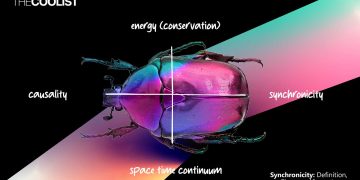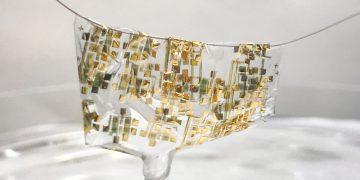In today’s rapidly changing world, the need for sustainable living practices has never been more urgent. With global challenges like climate change, resource depletion, and environmental degradation, it’s becoming increasingly clear that the way we live must adapt to ensure a healthier planet for future generations. Fortunately, technology is playing a pivotal role in this transformation. The integration of green technologies into everyday life is not only reducing our environmental footprint but also enhancing our well-being. In this article, we’ll explore seven cutting-edge technologies that are shaping a greener, healthier future.
Introduction: The Intersection of Sustainability and Wellness
Sustainability is no longer a buzzword; it’s an essential framework for addressing some of the most pressing issues of our time. At the core of sustainable living is the idea that the health of our planet is directly tied to the health of its inhabitants. When we take care of our environment, we inherently create better living conditions for ourselves, our communities, and future generations.
Wellness, on the other hand, is the state of being in good health, particularly as an actively pursued goal. It encompasses not only physical health but also mental, emotional, and environmental well-being. The connection between sustainability and wellness is clear: by reducing waste, conserving resources, and harnessing renewable energy, we create environments that promote both ecological and personal health. Green technologies are a key driver in this process, helping to facilitate more sustainable and healthier lifestyles.
Let’s dive into seven transformative green technologies that are not only helping protect the environment but also promoting overall well-being.
Solar Energy: Harnessing the Sun for Clean, Renewable Power
One of the most widely adopted green technologies is solar energy. Solar power has proven to be a game-changer in reducing reliance on fossil fuels and decreasing harmful emissions. As the cost of solar panels continues to decrease, this renewable energy source has become increasingly accessible for homes and businesses alike.
How Solar Energy Works
Solar panels, also known as photovoltaic (PV) cells, work by converting sunlight into electricity. These panels are made up of semiconductor materials that absorb sunlight and generate direct current (DC) electricity. This DC electricity is then converted into alternating current (AC) by an inverter, making it usable in your home.
Solar power is not only renewable but also incredibly clean, emitting zero greenhouse gases once installed. By generating your own electricity from the sun, you can reduce your carbon footprint significantly and even reduce or eliminate your energy bills over time. For households and businesses aiming for sustainability, solar energy is an essential investment.
Wellness Benefits
Beyond environmental impacts, solar energy contributes to wellness by reducing exposure to air pollution, a major contributor to respiratory issues and other health problems. Additionally, the autonomy that comes with using renewable energy can create a sense of empowerment and peace of mind, knowing that your home is part of the clean energy movement.
Smart Home Technologies: Enhancing Energy Efficiency through Automation
The integration of smart technologies into the home is revolutionizing how we manage energy consumption. Smart home systems, which are powered by the Internet of Things (IoT), allow homeowners to automate and monitor various aspects of their living environment, from lighting to temperature control to security.
How Smart Homes Work
Smart home technologies involve interconnected devices that communicate with each other and can be controlled remotely through smartphones, voice assistants, or central hubs. For example, smart thermostats like Nest or Ecobee learn your temperature preferences and adjust heating or cooling accordingly, optimizing energy use. Smart lighting systems, such as Philips Hue, can adjust brightness and color temperature based on the time of day or activity.
Wellness Benefits
By automating energy use, smart homes not only help save on energy costs but also promote wellness. Automated climate control ensures that homes are always at an ideal temperature, improving comfort and promoting better sleep. Moreover, smart homes can contribute to healthier living spaces by controlling air quality, reducing allergens, and ensuring that spaces are well-lit and comfortable. These technologies also reduce the carbon footprint of households, directly impacting global wellness.
Green Building Materials: Sustainable Materials for Eco-Friendly Homes
Sustainable construction is one of the most effective ways to build homes and buildings that have minimal environmental impact. The choice of building materials is crucial in reducing carbon emissions and conserving resources.
Sustainable Building Materials
Green building materials are those that have a reduced environmental impact compared to conventional materials. These include products like recycled steel, bamboo flooring, reclaimed wood, and low-VOC (volatile organic compound) paints. For insulation, eco-friendly options such as spray foam made from plant-based materials and cellulose made from recycled paper offer energy efficiency without harmful environmental consequences.
One particularly exciting development in green building materials is the use of mycelium (fungus) and hempcrete, both of which are natural, renewable materials with impressive insulation properties. These materials are gaining popularity in the construction industry as more people seek out sustainable building solutions.
Wellness Benefits
Green buildings promote healthier indoor environments by minimizing exposure to toxic materials and improving air quality. For example, low-VOC paints and finishes help reduce indoor air pollution, which can have detrimental effects on respiratory health. Moreover, the use of sustainable materials contributes to the overall health of the planet, aligning with our collective responsibility to protect the environment.

Vertical Farming: Urban Agriculture for Better Nutrition and Lower Carbon Footprints
As the global population grows, food production must evolve to meet the demands of urbanization and climate change. Traditional farming methods are resource-intensive, requiring large amounts of land, water, and energy. Vertical farming offers a solution by growing crops in stacked layers within controlled environments, often in urban settings.
How Vertical Farming Works
Vertical farming uses hydroponics, aeroponics, and aquaponics systems to grow food without soil. These technologies are highly efficient, using less water and land while producing food in a fraction of the time it takes with conventional farming. Vertical farms can be set up in urban centers, reducing the need for long-distance transportation and minimizing the associated carbon emissions.
Wellness Benefits
Vertical farming contributes to wellness by increasing access to fresh, nutritious food in urban areas, where traditional farming is not feasible. These farms reduce the carbon footprint of food production, as they require less transportation and refrigeration. Furthermore, growing food in cities allows for more local and organic produce, improving nutrition and the overall health of urban populations.
Electric Vehicles: How EVs Are Transforming Personal Transportation
Transportation is a major contributor to air pollution and greenhouse gas emissions, particularly in urban areas. Electric vehicles (EVs) are a critical part of the solution, offering a cleaner alternative to gasoline and diesel-powered cars.
How EVs Work
Electric vehicles run on electricity stored in batteries, which are charged via an electric outlet. Unlike traditional vehicles, EVs produce zero tailpipe emissions, making them far less polluting. In addition, many EVs are equipped with regenerative braking systems that recharge the battery when the car slows down, further increasing efficiency.
Wellness Benefits
The adoption of electric vehicles directly impacts public health by reducing air pollution. Cleaner air leads to a reduction in respiratory diseases, cardiovascular issues, and other health problems caused by vehicle emissions. Additionally, EVs help reduce noise pollution in cities, contributing to a quieter and less stressful urban environment. The transition to electric transportation also helps mitigate climate change, creating a healthier planet for all.
Water Conservation Tech: Tools for Managing and Reducing Water Waste
Water scarcity is becoming an increasingly pressing issue in many parts of the world. Fortunately, technological innovations are helping conserve this precious resource through smarter water management systems.
How Water Conservation Tech Works
Water conservation technologies include smart irrigation systems that use sensors and weather data to optimize watering schedules for crops and lawns. For households, smart faucets and showerheads help reduce water usage without sacrificing performance. Additionally, rainwater harvesting systems capture and store rainwater for later use, reducing reliance on municipal water systems.
Wellness Benefits
Water conservation technologies help preserve clean, fresh water, ensuring that future generations have access to this essential resource. These technologies also help reduce the energy required to pump, treat, and transport water, which contributes to both environmental and financial savings. Conserving water in the home or garden also reduces the stress placed on local ecosystems and improves water quality in surrounding areas, supporting both environmental and human health.
Conclusion: The Role of Technology in Building a Greener, Healthier Future
As we’ve seen, green technologies are playing a critical role in shaping a sustainable future that benefits both the planet and its inhabitants. From renewable energy sources like solar power to innovations in transportation and agriculture, these technologies are transforming the way we live, work, and interact with the environment.
The intersection of sustainability and wellness is becoming increasingly clear: by adopting green technologies, we can reduce our ecological footprint while improving our health and quality of life. As we continue to innovate and invest in these technologies, we move closer to a future where sustainable living is not just a goal but a way of life, ensuring a healthier planet for generations to come.
















































Discussion about this post